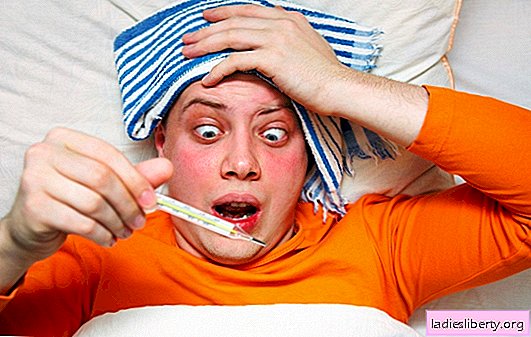
Ringworm is an infectious skin disease that causes a certain type of pathogenic fungus. This disease is very common in dogs, and can develop into a chronic form in the absence of timely treatment.
Methods of infection
The causative agent of the disease is the Trichophyton fungus. It parasitizes on the skin of various animals. Due to its vitality, it is not afraid of cold and heat, can be active up to two years and is able to quickly be transmitted to healthy animals. Therefore, it is very important to begin treatment soon and consult with a veterinarian to prevent a chronic protracted form of the disease.
A favorite pet can easily catch this infection if:
· Will be in contact with a sick animal;
· Eat from a bowl of an infected dog or play with its thing;
· Walks in an area that is infected with trichophyton spores.
More often, individuals with a weak immunity are susceptible to infection. These are puppies, old pets, as well as those who have recently been operated on or suffered a disease. Ringworm in dogs of small breeds is much harder. Because the fungus affects a large area of the skin, and the proportions of the body in this ratio are quite small. In this regard, owners of small dogs should be alert.
Ringworm in dogs: the main symptoms
From the moment of infection to the appearance of the initial signs, several weeks can pass. The owner may not notice this immediately. At the initial stage, you can diagnose a barely noticeable rash on some part of the skin. The behavior of the animal also changes. The dog becomes restless, constantly itches, sometimes loses appetite. If the pet has strong immunity, signs of the disease will appear within a few weeks.
The main symptoms of ringworm in dogs are:
ü the appearance of bald spots;
ü loss of hair in the area of inflammation;
üzud of varying degrees;
ü peeling and crusting on the affected area.
Flaky spots can be of various shapes and sizes. It is very important to start treatment on time, since with regular combing of the affected area, the inflamed skin will be injured and scratches and ulcers will begin to appear. And this will lead to the development of a secondary infection and the spread of the disease throughout the body. It is important to remember that wool can also begin to fall out from other diseases. Therefore, you should contact your veterinarian who will do a test for the presence of fungus and make the correct diagnosis.
Methods for treating ringworm in dogs
If your pet has the first signs of the disease, you should consult your veterinarian. It is important to destroy a harmful fungus as soon as possible, then the negative consequences for the body will be minimal. It is not recommended to self-medicate or to listen to useful tips from friends. The methods used will give a temporary effect or disrupt the picture of the disease.
Therapy should be comprehensive. It is necessary not only to locally treat the foci of the disease, but also to strengthen the animal's immune system. The duration of treatment will be affected by how severe and neglected the form. On average, it will take a month or a half. The course prescribed by the veterinarian is recommended to complete. You can not stop it if the condition of the dog has improved. After therapy, you will have to repeat the examination to make sure there are no fungi in the body.
Different means are used to treat ringworm in dogs. These are ointments (Clotrimazole, Miconazole), tablets (Fluconazole, Griseofulvin), shampoos, antibiotics, immunostimulants, a solution of iodine and salicylic acid. Vitamins help restore immunity and accelerate skin regeneration. And antibiotics are necessary if a secondary infection has occurred, which contributes to inflammatory processes and festering of wounds.
During medical measures it is recommended to use rubber gloves. Because ringworm in dogs is a contagious disease. You also need to disinfect the places where the animal is: the room, rug, care items, toys. This will help avoid the chance of getting infected again.
How to treat affected areas:
· You need to cut the hair, speaking a few centimeters behind the lesion;
· Clear of easily removed crusts and formations. You can soften them with warm soapy water or hydrogen peroxide;
· Treat the affected area and the surrounding healthy area with a drug;
· Create conditions that will prevent the animal from licking drugs. This will help muzzles or collars.
Preventative measures
If you properly care for your beloved pet and think about preventive measures, you can minimize the risk of infection with ringworm.
Useful Tips:
· It is necessary to monitor the diet of the dog;
· It is important to timely get vaccinated and visit the veterinarian;
· It is recommended to regularly examine the skin of the animal;
· The diet should contain vitamins that strengthen the immune system;
· After a walk holding a hygienic shower;
· Periodically it is necessary to carry out antiparasitic treatment of the dog and its things.
The dog owner must also take care of personal hygiene. It is necessary to use a disinfectant for treating hands after contact with a sick pet. Children should not be allowed to get a sick dog. And it’s better to keep him in isolation until complete recovery. It is advisable not to forget to carry out wet cleaning of the room where the sick animal is located. Need to change clothes more often. This will help avoid the spread of spores. And after recovery, all objects of the dog should be disposed of.
Such measures help to increase the body's resistance to different types of fungi. It should be remembered that you can not self-medicate. Otherwise, the disease can develop into a chronic form, and will worsen every year. Only a qualified veterinarian can make the correct diagnosis and prescribe effective treatment.











